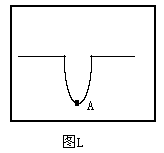 A parameter called electrical length (unit: MHZ) is commonly used in transmission lines to measure the electrical performance of cables. When the factory produces cables, due to the manufacturing process, the electrical specifications of each batch of cables are different. For example, two cables with the same physical length have the same electrical performance for the same high-frequency signal. Not the same, so the concept of electrical length was introduced. It reflects the characteristics of the cable to a certain frequency signal within a unit of physical length. This parameter is particularly important in the feed system for making transmit antennas. For example, the sub-feeder cables in the article "Mating of Double-Layer Cross-type Transmitting Antenna" published by me, when the physical length is the same but the electrical length is not the same, the actual impedance of the sub-feeder will shift and cause The additional phase shift makes it difficult to match the entire antenna system.
A parameter called electrical length (unit: MHZ) is commonly used in transmission lines to measure the electrical performance of cables. When the factory produces cables, due to the manufacturing process, the electrical specifications of each batch of cables are different. For example, two cables with the same physical length have the same electrical performance for the same high-frequency signal. Not the same, so the concept of electrical length was introduced. It reflects the characteristics of the cable to a certain frequency signal within a unit of physical length. This parameter is particularly important in the feed system for making transmit antennas. For example, the sub-feeder cables in the article "Mating of Double-Layer Cross-type Transmitting Antenna" published by me, when the physical length is the same but the electrical length is not the same, the actual impedance of the sub-feeder will shift and cause The additional phase shift makes it difficult to match the entire antenna system. So how to detect the electrical length of a cable? The specific method is this. For example, the center frequency of the transmitting antenna is F, the corresponding wavelength is λ, and a cable with a physical length of λ / 2 is intercepted to short-circuit its terminal to form a total reflection of the signal. The frequency meter performs the test and adjusts the center frequency of the output of the frequency sweeper to produce a depressed waveform on the screen of the frequency sweeper (as shown in Figure L). This depressed wave is the reflected waveform of the cable. From the long-line theory, we know that for a certain frequency signal, the transmission line with a short-circuited terminal is at the maximum λ / 2 from the terminal, and its reflected wave current has the largest amplitude, so at this time point A (that is, the frequency corresponding to the peak) ) Is the electrical length of this cable. If the frequency indicated by the frequency scale at point A is equal to F, it means that the electrical performance of this cable is up to the standard. If it is not equal to F, it means that there is a difference in the electrical performance of the cable. It must be corrected (physical length).
For cables with the same characteristics, when their physical lengths are the same, their electrical lengths are also the same; when their characteristics are not equal, the physical lengths of the cables are the same and their electrical lengths are different, so we can use the electrical lengths This indicator measures the consistency of cable performance.

Follow WeChat
Interesting and informative information and technical dry goods

Download Audiophile APP
Create your own personal electronic circle

Follow the audiophile class
Lock the latest course activities and technical live broadcast
comment
Publish
related suggestion
